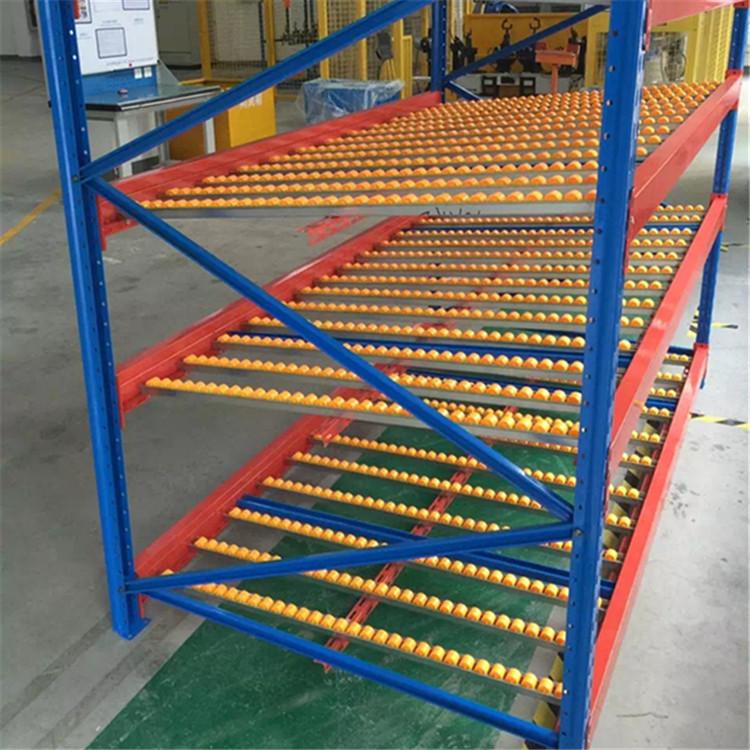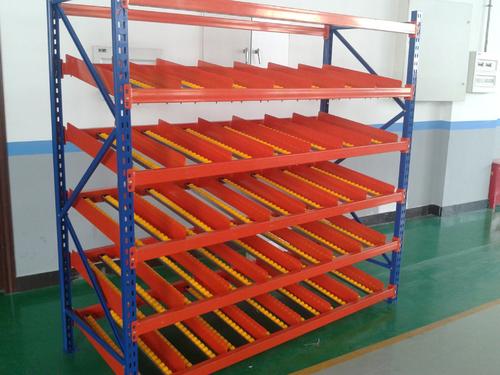In the relentless pursuit of efficiency, speed, and accuracy within modern supply chains, warehouses and distribution centers are undergoing a profound transformation. At the heart of this revolution lies automated racking systems – sophisticated solutions that transcend traditional static shelving. These systems integrate advanced robotics, software intelligence, and high-density storage structures to create dynamic, highly efficient storage and retrieval environments. Moving far beyond simple mechanization, automated racking systems represent a fundamental shift in how inventory is managed, handled, and optimized. This comprehensive guide delves deep into the world of automated racking systems, exploring their core components, benefits, types, and critical considerations for implementation.

1. Defining Automated Racking Systems: Beyond Traditional Shelving
At its core, an automated racking system (often synonymous with Automated Storage and Retrieval Systems - AS/RS) is a combination of hardware and software designed to automatically place and retrieve loads from defined storage locations with minimal human intervention. Unlike conventional racking where forklifts navigate aisles, automated racking systems utilize robotic cranes, shuttles, or carousels operating within or alongside the rack structure itself, guided by a central Warehouse Management System (WMS) or Warehouse Control System (WCS).
Key Components:
The Rack Structure: Engineered to support the specific automated racking system type (e.g., deep lanes for shuttle systems, tall structures for unit-load cranes). It's designed for precision and high load-bearing capacity.
The Automation Mechanism: This is the "robot" – stacker cranes (single or dual-mast), autonomous shuttle carts, vertical lift modules (VLMs), or horizontal carousels. These devices physically move the load.
The Control System: The brain of the operation. The WCS/WMS software directs the automation, optimizes storage locations (slotting), manages inventory in real-time, and sequences retrieval orders for maximum efficiency.
Conveyance Interfaces: Integration points (conveyors, lifts, AGVs/AMRs) that seamlessly connect the automated racking system to other warehouse processes like receiving, packing, and shipping.
Sensors and Safety Systems: Critical for real-time tracking, collision avoidance, and ensuring safe operation within the automated environment.
2. Unleashing Unprecedented Efficiency and Productivity Gains
The most compelling driver for adopting automated racking systems is the dramatic leap in operational efficiency and productivity they deliver.
Lightning-Fast Retrieval Speeds: Robotic cranes and shuttles operate at significantly higher speeds and accelerations than human-operated forklifts, drastically reducing the time taken to retrieve a single item or pallet (often down to seconds). Orders are fulfilled faster.
24/7 Operation: Automated racking systems don't require breaks, shifts, or sleep. They enable true round-the-clock operation, maximizing asset utilization and throughput capacity without increasing labor costs proportionally.
Reduced Travel Time & Optimized Pathing: The control software calculates the most efficient path for the retrieval mechanism. No wasted time navigating aisles or searching for stock. Multiple transactions can often be sequenced for a single trip (dual-command cycles).
Higher Throughput Capacity: By combining speed, elimination of non-productive travel, and continuous operation, automated racking systems can handle significantly higher volumes of transactions (put-away and retrieval) within the same footprint compared to manual systems.
Consistent Performance: Automation eliminates human variability. Performance is predictable and consistent, unaffected by fatigue, breaks, or skill level differences. This reliability is crucial for meeting demanding service level agreements (SLAs).

3. Maximizing Cube Utilization: The Space Optimization Advantage
Warehouse space is a premium cost. Automated racking systems excel at utilizing the available cubic space far more effectively than conventional methods.
Extreme Height Utilization: Robotic cranes can operate reliably in racking structures exceeding 100 feet (30+ meters) in height, safely utilizing the full vertical cube of the building, which is often impossible or highly inefficient with manned forklifts.
Narrow or Eliminated Aisles: Since human operators aren't navigating the aisles, they can be dramatically narrowed (Narrow Aisle AS/RS) or completely eliminated (e.g., in shuttle systems or VLMs). This recaptures vast amounts of floor space for additional storage or other operations.
High-Density Storage Configurations: Technologies like Pallet Shuttle Systems allow for deep-lane storage, where multiple pallets are stored back-to-back in a single lane, accessed by an autonomous shuttle. This significantly increases pallet positions per square foot.
Dynamic Slotting: The WMS/WCS can continuously optimize storage locations based on turnover rate (ABC analysis), putting fast-moving items in the most accessible positions automatically, further enhancing efficiency and space use over time.
4. Transforming Labor Dynamics: Safety, Accuracy, and Upskilling
The impact of automated racking systems on the workforce is significant and multifaceted, generally leading to a safer, more accurate, and strategically focused labor pool.
Enhanced Safety: By removing humans from the potentially hazardous tasks of high-reach forklift operation and navigating narrow aisles with heavy loads, automated racking systems drastically reduce accidents, injuries, and associated costs. Workers interact with the system at ergonomic pick stations.
Near-Perfect Inventory Accuracy: Barcode scanning or RFID integration at the point of storage and retrieval, combined with the system's precise tracking, virtually eliminates human errors in put-away, picking, and record-keeping. Cycle counting becomes simpler and more accurate.
Labor Cost Reduction & Reallocation: While significant upfront investment is required, automated racking systems typically yield substantial long-term labor cost savings, particularly in high-volume or multi-shift operations. Labor is reallocated from physically demanding, repetitive tasks to higher-value roles like system monitoring, maintenance, exception handling, quality control, and customer service.
Improved Ergonomics: Manual handling of heavy or bulky items is minimized. Workers interact with goods at ergonomically designed workstations, reducing strain and fatigue.
Addressing Labor Shortages: Automation provides a powerful solution to the persistent challenge of finding and retaining skilled forklift operators and warehouse labor, ensuring operational continuity.
5. Navigating Implementation Challenges and Considerations
While the benefits are compelling, implementing automated racking systems is a major strategic decision requiring careful planning and investment. Key challenges and considerations include:
Significant Capital Investment: The upfront cost for the system hardware, software, structural modifications, and installation is substantial. A thorough ROI analysis, considering labor savings, space savings, productivity gains, error reduction, and improved service levels over a 5-10 year horizon, is essential.
System Complexity and Integration: Designing and integrating a complex automated racking system with existing WMS, ERP, and material handling equipment requires deep expertise. Choosing the right system integrator is critical.
Infrastructure Requirements: The building must often be evaluated and potentially upgraded for factors like floor flatness, column spacing, clear ceiling height, seismic requirements, and power supply capacity to support the automated racking systems.
Software is King: The WCS/WMS is the central nervous system. Its robustness, flexibility, and ability to integrate seamlessly with other systems are paramount to success. Software updates and IT support are ongoing requirements.
Maintenance Expertise: While highly reliable, automated racking systems require specialized preventative and predictive maintenance programs. Having trained technicians or reliable service contracts is crucial to minimize downtime.
Change Management: Transitioning to automation significantly changes workflows and job roles. Proactive change management, clear communication, and comprehensive training for staff at all levels are vital for smooth adoption and maximizing benefits.
6. Exploring the Diverse Landscape of Automated Racking Systems
The term "automated racking systems" encompasses a variety of technologies, each suited to different product profiles, throughput requirements, and operational goals:
Unit-Load AS/RS: Designed for palletized goods. Features large robotic cranes operating in narrow aisles within very tall rack structures. Ideal for high-volume, full-pallet in/out operations.
Mini-Load AS/RS: Designed for smaller cases, totes, or individual items stored in bins or trays on the racking. Smaller, faster cranes retrieve entire trays to an ergonomic pick station. Excellent for high-SKU count, order fulfillment.
Pallet Shuttle Systems (Automated Deep Lane Storage): Uses autonomous shuttles that run on rails within deep storage lanes to store and retrieve pallets. Ideal for high-density storage of homogeneous products with FIFO or LIFO requirements (e.g., beverages, food, chemicals).
Vertical Lift Modules (VLMs): Enclosed systems with vertically moving trays. The machine brings the requested tray directly to the operator at an ergonomic access window. Maximizes floor space and is excellent for small parts, slow-movers, or high-value items.
Horizontal Carousels: Rotating shelves (like a giant ferris wheel on its side) bring bins or items to an operator workstation. Often used in pairs for batch picking. Space-efficient for small parts picking.
Autonomous Mobile Robots (AMRs) with Racks: Fleets of robots that move entire mobile shelving units (pods) to stationary pick stations. Offers high flexibility and scalability, particularly in e-commerce fulfillment.
Automated racking systems are no longer a futuristic concept; they are a present-day imperative for businesses seeking competitive advantage in logistics and fulfillment. By delivering unparalleled gains in efficiency, space utilization, accuracy, and safety, they address the core challenges of modern warehousing. While the investment and implementation require careful navigation, the long-term benefits – increased throughput, reduced operational costs, improved inventory control, enhanced scalability, and a safer, more engaged workforce – are transformative.
As technology continues to advance, with improvements in robotics, artificial intelligence for predictive analytics and optimization, machine learning, and seamless software integration, automated racking systems will become even more intelligent, adaptable, and accessible. For businesses looking to future-proof their supply chain operations, maximize their real estate value, and meet the ever-increasing demands of speed and accuracy, embracing automated racking systems is not just an option; it's the strategic pathway to sustainable growth and resilience in the dynamic world of logistics.







